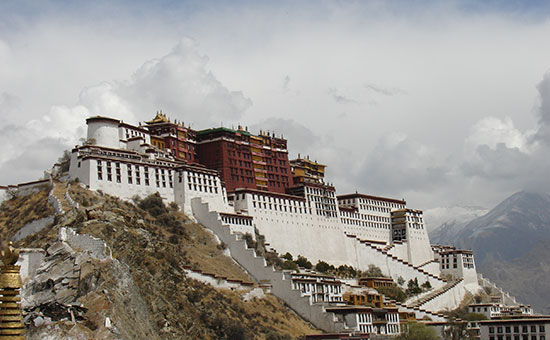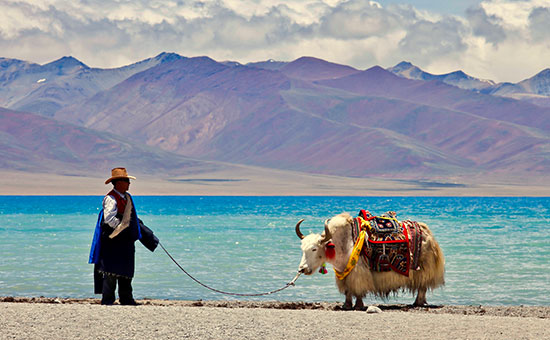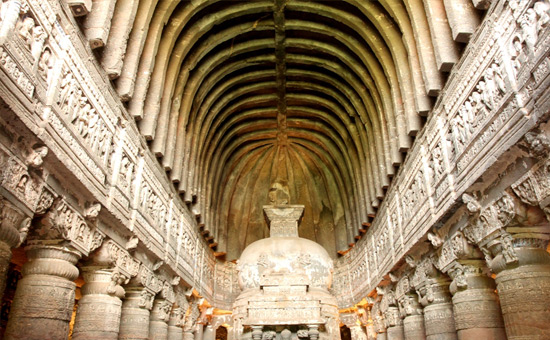-
This long read tells why Tibet has historically never been part of China, why China wanted to incorporate Tibet into China, strategic & economic importance of Tibet, implications of China’s Tibet policy & areas of discord between India & China with Tibet as a backdrop
“Following the logic of power, empires in their expansive phases push out their frontiers until they meet the resistance of a strong neighbour, or reach a physical barrier which makes a natural point of rest, or until the driving force is exhausted. Thus through the eighteenth and nineteenth centuries, British power in India expanded, filling out its control of the peninsular subcontinent until it reached the great restraining arc of the Himalayas. There it came into contact with another empire, that of China.
This article was first published in Oct-Dec 2007 issue of IDR but it
still relevant.
In the central sector of frontier zone, where lay petty states and feudal territories, there began a contest for dominance which continues to the present day. In the North-East and North-West where no minor independent polities existed to act as buffers, the British sought secure and settled boundaries with China, which they failed to achieve. The failure was to lead in the middle of the twentieth century to the border war between India and China”.
Contrary to the popular belief, it is not the border question that has bedevilled
the relations between India and China. It is the larger issue of resolution of the Tibet problem to China’s satisfaction which is the greatest impediment to normalisation of relations between the two Asian giants. Status of Tibet is the test case for China’s survival as a nation. No wonder that whenever our leaders visit China, the first thing Chinese like to hear from them is that Tibet is an integral part of China.
If the Chinese had their way, they would perhaps ask it to be written on
a judicial stamp paper and handed over to them at Beijing airport on arrival by
the Indian VIP.
Historical PerspectiveHistorically Tibet has never been a province of China.
It has been autonomous over the centuries. China had lose control over
it under Manchu Tributary system similar to the one it exercised over Nepal,
Sikkim and Bhutan where their rulers paid tribute to China and possessed
Chinese official rank.
Not many people may be aware that in AD 763, Tibet conquered large
parts of Western China and the then Emperor of China was forced to marry Princess Wencheng to
the Tibetan King Song Tsnen Gam Po. Around the ninth century, Tibet came under
Buddhist influence and by the thirteenth century, almost entire Tibet converted
to Buddhism. The
hand that held the sword was now supporting a prayer wheel.
A warrior nation had turned pacifist. Mongols conquered Tibet in thirteenth
century and the Tibetan Lamas went into an arrangement with the Mongol rulers known as Cho Yon, meaning Patron-Priest relationship. The Lama became the spiritual and temporal head in Tibet, albeit with foreign support. The concept of the Dalai Lama, which was Mongolian in origin, also came into being during this time. Tibet’s troubles seem to have started with the Lama getting used to ruling with foreign support. The concept of national security was totally neglected with far reaching consequences in 1950-51.
By the beginning of the twentieth century Tibet had become the Great Game
pawn between China, Britain and Russia. On the pretext of sending a trade
mission to Tibet, British troops entered Tibet, resulting in the conclusion of
a Treaty in 1904 between Tibet and Britain. Obviously the Treaty was concluded
on unequal terms. China played the role of a bystander totally ignoring her
responsibility, if any. The treaty was bilateral and clearly signified the
independent status of Tibet.
The Manchu court refused to countersign the Treaty as it failed to
recognize Chinese suzerainty over Tibet. On protracted negotiations, China
concluded a treaty in 1906 with Great Britain which prevented Tibet from
concluding direct negotiations with any foreign power without the consent of
China.
China, however, was excluded from the category of foreign powers. An Anglo-Russian Treaty signed in 1907 also accepted a measure of Chinese suzerainty over Tibet. Both London and Moscow undertook to refrain from violating Tibet’s territorial integrity and interfering in her internal affairs. Both parties were precluded from entering in direct negotiations with Tibet except through the good offices of China. Nothing can be read in these bilateral treaties among Great Britain, China and Russia. They could not legislate or decide pertaining to a third country behind its back. These were intrigues of power in the region promoting their interests or forestalling the perceived threats.
Only from 1907 to 1911, has Tibet been under direct Chinese rule when the Zhao brothers – Zhao Erxen and Zhao Erfang conducted a military campaign to bring Tibet under Chinese rule. Once Manchu dynasty was overthrown by Sun Yat Sen revolution of 1911, Tibet reverted to its former status as an independent country till 1950 when it was annexed by the Communist People’s Republic of China.
 Mt Kailash in Tibet
is revered by Hindus, Buddhists & Jains.
Mt Kailash in Tibet
is revered by Hindus, Buddhists & Jains.
Chinese
desire to incorporate Tibet into China stems from two reasons.
First is historical. Chinese realised early on during Manchu dynasty that a defensive policy of having the Great Wall as a Maginot Line is not deterring aggression. Therefore an aggressive policy and Chinese security became interlinked. Secondly the increase in China’s population has brought about a need for “LEBENSRAUM” so urgent that occupation of a defenseless Tibet became a necessity.
The Chinese annexed Tibet in 1950-51 and began a systematic campaign of
Hanaisation of Tibet. In order to rule Tibet more effectively, the Chinese
created a truncated version of Tibet called Tibet Autonomous Region (TAR) in
Sep 1965.
TAR has an area of 1.23 million sq miles as against 2.5 million sq miles
of greater Tibet, large parts of which were merged with Quinghai, Gansu and
Schezuwan provinces of China.
Under Nehru’s myopic policy of appeasement of the Chinese at any cost, there was only a mild protest at the annexation of Tibet by China, which the Chinese rudely brushed aside. The only person who foresaw a future clash was Sardar Patel who wrote a prophetic letter to Nehru on 7 Nov 1950, warning him that China is a potential enemy. Nehru ignored this letter. He considered India’s foreign policy as his personal fiefdom and kept up his efforts at befriending China. Forsaking the Tibetan cause is a classic case in point.
It was forgotten that Buddhism went from India to Tibet and India has a
centuries old relation with Tibet by way of religion, trade and an emotional
affinity. Tibet
was forsaken for an elusive Chinese friendship.
It has been argued that, both on moral and strategic grounds, the Nehru
government should have moved energetically to ensure international recognition
of Tibetan independence even before the Communists consolidated their position
in China.
In the opinion of many international law experts, on 15 August, 1947,
Tibet was more fully qualified to be treated as an independent state than a
great number of countries which are members of the United Nations today.
However, it was also true that no country had recognized Tibet as an
independent sovereign state and that, whatever the legal position, the Chinese,
both the Nationalists and the communists, were convinced that Tibet was an
integral part of China.
There were other reasons as well as to why India, more or less passively, accepted the ‘liberation’ of Tibet by China:
1. While China may not have had a clear-cut case in favour of its claim to sovereignty over Tibet, it did appear to have some sort of a claim to authority over Tibet for which the British had used the term ’suzerainty’.
2. British India had acquired, through use of force, certain
extra-territorial rights in Tibet, and India did not want to be seen as seeking
to inherit the mantle of British imperialism.
3. Tibetan behaviour was erratic (including sweeping territorial claims
in a message sent to Delhi soon after India became independent).
4. India did not have adequate military capability to act on its own. Nehru was not about to invite the Americans (the only power with the capacity and, perhaps, the will) to stop the People’s Liberation Army (PLA) from moving into Tibet’.
Tibet comprises an integral part of China’s nation building process. China was specifically concerned about Tibet given its ‘suzerain’ status. In fact, Tibet emerged as a bone of contention among the imperialist powers in the nineteenth century.
The British power in India accorded suzerain status to Tibet to keep out
the Russian influence from the region. Suzerainty implied a low level of
Chinese administrative and military presence and a high level of both Tibetan
autonomy and British-India influence. In effect, it meant turning Tibet into a
buffer zone.
In the twentieth century the United States, given its commercial interests and Open Door policy, also upheld China’s suzerainty over Tibet. In 1949, when the People’s Republic of China came to power, it was determined to end the ‘century of humiliation’ and establish sovereignty over Tibet.
 Potala Palace by Ramesh Tripathi.
Potala Palace by Ramesh Tripathi.
For China,
control over Tibet was important for two reasons:
First, to enhance its security on the western frontier and, second, to exploit the abundant mineral resources of the region. Both these reasons were important to consolidate China’s power and to build a strong nation in order to end the ‘century of humiliation’.
From this geo-political perspective, the building of a road through the
Aksai Chin area gained salience. The road through Aksai Chin area comprised one
of the three main routes to Tibet from the rest of China. It was also a route
which was open year-round and least hazardous and in turns also least
expensive. Therefore, control of Aksai Chin was perceived as essential in Chinese strategy to
control the whole of Tibet.
The Tibetan question in the Chinese nation building process inevitably exposed the nature of the international border it shared with India. India inherited the British policy of keeping Tibet as a buffer zone and therefore Tibet’s suzerain status suited its national interests.
In the post 1949 period, India urged China to let Tibet be
autonomous, as it would minimize China’s military presence in the region. However, the entry of twenty thousand PLA troops in 1951 ended Tibet’s status as a buffer zone. At the same time, it exposed the Sino-Indian border as undefined and invalidated the previous agreements between Tibet and British India on border delineation.
The Military Dimension Strategic Importance of Tibet
Tibet had acted as a buffer between India and China for centuries. The British fully understood this; unfortunately we did not and tamely accepted China’s military occupation of Tibet. We even dissuaded the Americans not to let Taiwan raise this issue in the UN.
Tibet acts as a launch pad for a multi-pronged offensive into India
There are reports of deployment of Chinese missiles in Tibet which are
targetted at Indian cities. It is reported that there are 8 x ICBMs, 70 x
MRBMs, 20 x IRBMs, 15 x Radar Stations in TAR. Any envisaged Indian offensive
into Tibet does not hurt mainland China. Indian Air Force does not have the
reach up to mainland China. Any offensive undertaken by India into Tibet will
be in a void. So the importance of keeping Tibet as a buffer between India and China was
understood by China, but un-fortunately not by India.
Economic Potential of Tibet
Tibet is rich in unexploited mineral resources, particularly the
strategic materials like uranium, oil, coal, gold iron, forest and hydro
potential. According to many geologists, Tibet is perhaps the last and the
largest untapped oil belt in the world. The stratum is similar to the oil fields
in the Persian Gulf and Karakorum.
Tsaidam Basin has oil reserves of 42 billion tons and natural gas reserves of 1500 billion cubic meters. Natural gas reserves in Tibet and Tibetan ethnic areas can alone sustain China’s requirements for seven years. 200 million tons of oil has also been found in Chang Thang in Lhunpula Basin.
Tibet has the world’s largest deposits of Uranium around the eastern mountainous shores
of Koko Nor. Known mines of Uranium include Tsaidam Basin, Thewo in Amdo,
Yamdrok Tso and Damshung near Lhasa. Cesium is a rare metal used in military
hi-tech application, particularly in atomic clocks and high energy solid fuels.
Cesium deposits worth around $ 6.5 billion have been reported in TAR.
Tibet and Tibetan ethnic areas are endowed with the greatest river
system in the world.
Its rivers supply fresh water to 85% of Asia’s population and approximately 50% of the world’s population. Three of the world’s major rivers (Yarlung Tsangpo or Brahmaputra, Yangtze and Mekong) have their headwaters in Tibet or in Tibetan ethnic areas.
The South Asian Sub-Continent is nourished by perennial flow of four
major rivers originating from different directions of the Kailash Range in
western Tibet. Other mighty rivers flowing from Tibet, such as the Yangtze,
Yellow, Salween and Mekong sustain the lives of millions in China, Myanmar,
Laos, Cambodia, Thailand and Vietnam.
 Lake in Tibet. Pic by Medha Jaishankar
Lake in Tibet. Pic by Medha Jaishankar
Chinese Infrastructural Development in Tibet
Greater connectivity between mainlands in China has been provided by the Western, Central and Eastern Highways. It should be remembered that it was the issue of Western Highway passing through Aksai Chin which acted as the trigger for the 1962 war. The Gormo-Lhasa railway has been completed. Together with the three Highways, it greatly enhances Chinese capability for induction of forces in Tibet. The Gormo – Lhasa pipeline has a capacity of half a million tonnes of fuel annually. All the airfields in Tibet have been lengthened and upgraded. Road communications to the border have been greatly improved.
Military ImplicationsIt may be noted that China uses the Tibetan plateau for the development
of its nuclear bombs.
The Chinese military arsenal on the plateau is believed to include 17 top secret radar stations, eight missile bases with at least eight inter-continental ballistic missiles, 70 medium-range and 20 intermediate-range missiles, and 25 airfield and airstrips. Some of the missiles have a range of a nearly 13,000 Kms, which could reach many parts of Asia. However, so far lack of transport facilities had greatly restricted China’s military manoeuvrability.
With the completion of the Qinghai-Tibet railway line, China will be
able to overcome this obstacle in increasing its military deployment near the
India-Tibet border region. This indeed will have serious security implications
for India. It is believed that it will reduce the travel time from Gormo to
Lhasa from 72 hours to 16 hours. In military terms, the rail link gives China
the capability to mobilize up to 12 division (12,000 men make a division) a
month. Though China may not pose a direct military threat to India, its
strategic infrastructure in Tibet will enhance its military capability and
enable Chinese coercive diplomacy with respect to the border dispute with
India.
China also has a listening post in occupied Aksai Chin. Sources say the listening stations will monitor Indian deployments in the region, eavesdrop on forward and intelligence communications of the army, and even intercept US radio signals pertaining to anti-terrorism activities in Afghanistan.
Problems Encountered by the People’s Liberation Army in Tibet.
1. Long axes of maintenance and disruption due to weather and high
altitude conditions.
2. Need for extensive winter stocking.
3. Requirement of regular turnover of troops and low shelf life items in
high altitude.
4. Acclimatization of troops and adverse effects on men, animals and
material.
5. A sullen population not reconciled to Chinese occupation.
6. Reduced airlift capability due to high altitude conditions.
7. Absence of railway link with the mainland, which is now being
addressed.
8. Adverse effects of high altitude on men and material.
China’s Tibet PolicyOn 7th October 1950, the Chinese PLA invaded Tibet and forced the
Tibetans to sign the Seventeen-Point Agreement.
The agreement was contradictory in nature. On one hand it stated the ‘Tibetans’ right of exercising national regional autonomy’, on the other it said that the ‘Central Authorities will not alter the existing political system in Tibet’. The subsequent developments revealed that the Chinese instead would determine ‘Tibetan autonomy’ and ‘Tibet’s future’.
The Country Report on Human Rights Practice – 2000 released by the Bureau of Democracy, Human Rights and Labour, the US State Department, February 2001, enumerated the impact of China’s Tibet policy and the gross Chinese violation of human rights in Tibet by pointing out the fact that,
1. Large-scale transfer of Han population in the Tibet Autonomous Region (TAR) has side lined Tibet’s traditional dominance.
2. Ethnic Han Chinese holds many positions of real power and they make most key decisions in Tibet.
3. Discrimination in employment is rampant with ethnic Han hired preferentially for many jobs and receiving higher pay for the same work.
4. Tibetan language is neglected and Chinese language is used in most commercial and official communications.
5. Severe restrictions have been imposed on many traditional practices of the Tibetans and public manifestations of religious belief in the TAR’s urban areas have been restricted. The government has moved to curb the proliferation of monasteries – as it regards them as the den of subversive activities.
6. Government commits serious human rights abuses by torture, arbitrary arrest, and detention without public trial and imposes lengthy detention of Tibetan nationalists for peacefully expressing their political or religious views.
7. The government has turned Tibet into a dumping ground for radioactive waste from nuclear power stations. In addition, large-scale deforestation in Tibet to meet China’s increasing need of timber has caused widespread ecological damage.
In fact, from April 1996 Tibet is reeling under ‘strike hard’ campaign, which mainly targets monks and nuns loyal to the Dalai Lama. Since the ’strike-hard’ campaign, almost 10,000 monks and nuns have been expelled from their monastic institutions. Thousands have been persecuted. The photos of the Dalai Lama were banned.
Thus, China’s minority policy and regional autonomy practices has greatly affected Tibetan nationalism. ‘Han majoritarianism’ has been catastrophic for Tibet. It essentially implied that the Han being in the majority had the right to rule over the minority.
The logical corollary to this was that Han culture became the cultural model legitimizing national integration and assimilation of the minorities. Therefore, Han nationalism threatened the “cultural identity and political autonomy of the Tibetan people”. The denial of self-determination and adoption of regional autonomy in Tibet was meant to promote Han hegemonism and Han expansionism in non-Han regions.
 Orchha in Madhya Pradesh is awesome
Orchha in Madhya Pradesh is awesome
Implications of China’s Tibet Policy for India
China’s Tibet policy impacts on Indian security interests in mainly two ways.
One, it exposed the border problem between India and China which led to
the 1962 Sino-Indian War. As mentioned earlier, the Chinese invasion of Tibet
ended the buffer zone between the two countries. Till date, Sino-Indian
relations remains dotted with several rounds of protracted talks on the border
issue without achieving any major breakthrough.
At the same time it increased China’s reach into South Asia. In fact, Tibet has an 870 mile border with Nepal and China has been consolidating its relationships with the Nepal government. China reached an agreement with King Gyanendra in August 2002 to cease any ‘anti-China activities (unspecified) in Nepal.
Also, recently China asked Nepal to close down the Tibetan Refugee Welfare Office in January 2005. China’s growing influence in Nepal is thus at the expense of India and other key Western players, which has grave geo-political ramifications. The role of Nepal in linking Afghanistan’s membership to China’s quest for observer status in the SAARC cannot be missed.
Second, China’s Western Development Strategy, a product of China’s nationalism project, has deeper ramifications for India. A closer analysis of China’s Western Development Strategy indicates that more than removing economic backwardness from the region, gaining strategic capability is the primary objective.
China’s ‘Go West’ Policy is aimed at consolidating its power over Tibet through persistent Hanization policy. Infrastructure development and Han migration forms the linchpin of the Hanization process.
The grand strategy of China’s nationalism project is predicated largely on the construction of the Qinghai-Tibet railway project. Through this railway project China aims at achieving strategic capability vis-à-vis India.
The entire development strategy in Tibet is impelled by the crucial
strategic location of Tibet, as well as it being a focal point of Sino-Indian
rivalry. There are plans to extend the Qinghai-Tibet railway line to Kathmandu.
This will indeed have geopolitical ramifications for India.
Another serious consequence of Chinese developmental strategy in Tibet
could be in terms of environmental hazards.
India’s major rivers originate from the Trans-Himalayan region. China’s Western Development programme is feared to cause major deforestation and ecological imbalance. This, in the long run, may have discernible effect on the climatic patterns of the region, including India.
The recent threat of a lake burst in Tibet portending a catastrophic flood in Himachal Pradesh has exposed India’s vulnerability to environmental warfare. Some scientists point out that the denial of permission for Indians to visit the site, conflicting information from China about the lake parameters, and Chinse warning to India a month after the supposed ‘landslide’, heighten suspicion that the impending lake burst is being treated as an experiment in environmental warfare.
 Buddhist cave, Ajanta by S Nayyar.
Buddhist cave, Ajanta by S Nayyar.
Areas of Discord between India and China with
Tibet as the Backdrop
Chinese policy towards India after its annexation of Tibet has been a
mix of opportunistic mistrust.
The shelving of the Tibetan plea at the UN due to India’s reluctance to support the motion did not win Chinese confidence. Grant of asylum to Dalai
Lama and his followers after his flight to India in 1959 is seen as a hostile
act by China. China feels that the Khampa rebellion of 1959 was aided and
abetted by India in collusion with Western powers. Establishment of Tibetan
government in exile in India only aggravated matters.
Efforts by the Dalai Lama to keep alive the issue of Tibetan
independence/autonomy and seek world support further incensed the Chinese.
Chinese must be aware of the existence of the Special Frontier Force. In the context of India going to war with Pakistan in 1971 due to the Bangladeshi refuge influx, Huang Hua’s address to the UN Security Council after 1971 war is relevant. Huang said, “At present in India, there are a large number of so called refugees from Tibet. The Indian govt is also grooming the Dalai Lama, the chieftain of Tibetan counter revolutionary rebellion. Are you going to use this for aggression against China?”
Chinese cannot accept Indian claims to Aksai Chin since the strategic
Western Highway passes through it and captured area provides depth to the Western
Highway. The point to note here is that after the 1962 War the Chinese withdrew
from Eastern Sector, but, not from Ladakh. While China has settled its border
problem with all countries except India, she is not prepared to negotiate with
India except on her own terms. The case of the Western Sector has already been
pointed out.
In the Eastern Sector, if the Chinese agree to the Mc Mahon Line as the
boundary, it will amount to a tacit admission that in 1914, Tibet was an
independent country which negotiated the Mc Mahon Line with the British. This weakens the
entire Chinese case that Tibet has always been a part of China.
China cannot afford to grant autonomy to Tibet since its Western
provinces, especially the ones with Muslim majority may seek the same status.
This may become the trigger for breakup of China one day.
There has been, since the beginning, a wide gap in Indian and Chinese
perceptions on the issue of Tibet. India was convinced that given its unique history and culture, Tibet was entitled to something close to independence-if not complete independence – and that the term ’suzerainty’, though an invention of the British, was a more accurate description of the China-Tibet relationship than the term ’sovereignty’. There was also the conviction that Buddhism provided a very special link between India and Tibet.
With this background, it was taken for granted that India had a right to speak about Tibet and that it was a measure of Indian friendship – some called naïve appeasement – that India acknowledged China’s ’suzerainty’ over Tibet. When it became clear that China was determined to impose its sovereign control over Tibet, India took upon itself to assure others that China would settle the issue through peaceful negotiations with Tibet and would grant it a great measure of autonomy.
When in subsequent years it appeared that China had not honoured its pledge to the Tibetan people – and let it be said that this perception was not merely India’s but widely shared in the non-communist world – Nehru spoke more in
sorrow than in anger. India also believed that it deserved some credit for
voluntarily surrendering all the privileges in Tibet which it had inherited
from the British.
China had an entirely different perception. It was convinced that Tibet was an integral part of China and its control over the territory was loosened only by British imperialist machinations against the previous Chinese governments, which were weak. The term ’suzerainty’ as distinct from ’sovereignty’ was seen as part of the imperialist plot. Indian hesitation in the initial stages to recognize Chinese sovereignty over Tibet was seen as an attempt to inherit the imperialist mantle.
China believed that it was not only going to ‘liberate’ Tibet from all vestiges of imperialist intrigue, but also lead it away gradually from its feudal past into a modern, progressive society. The autonomy which it had promised Tibet was strictly limited, and it maintained that for India, even to refer to it was a case of gross interference in the internal affairs of China.
Chinese problems in Tibet are basically of their own making. Tibetans are not reconciled to the Chinese occupation. Han chauvinism is another problem. They have scant regards for the Tibetan way of life, its religious beliefs, etc. Outwardly things may appear calm, but under the surface there is great resentment. After the 1962 war, India allowed Dalai Lama unrestrained freedom of activity. The Tibetan govt in exile was established in Dehradun. India encouraged Dalai Lama to open offices in New York and Geneva. China denounced Dalai Lama as a ‘traitor’ and removed him from the PCART. Dalai Lama should recognize that Tibet has entered a period of stability and economic change.
 Chinese New Year- Indian Connection
Chinese New Year- Indian Connection
ConclusionTibet, irrespective of China’s tight control remains volatile.
Although the Dalai Lama has relinquished his demand for total
independence, his continued stay in India and the large support he enjoys in
the Western World will keep the pot boiling. How this issue is finally resolved
will have a major bearing on Sino-India relations.
The ultimate goal of Tibetan freedom movement would be to make the
people of Tibet pursue their traditional way of life in Tibet.
Fundamental characteristics of Tibet as a nation have been peace,
compassion, non-violence, spirituality and democracy. Tibet has devoted the
last 1300 years to inner exploitations. Political freedom is only a means and
not the end.
The youth contends that the Tibetan struggle would neither be a political
movement nor anti-Chinese.
The Dalai Lama, his Government and Tibetans would endeavour to undo the obliteration of their country by peaceful means, according to Buddhist traditions. But like any other youth, the Tibetan youth is getting restless and is convinced that non-violent means are being seen as Tibetan weakness and would not lead to any tangible results. Tibetan youth may well adopt the Indian model – the combine of non-violent and violent movement. So long as China perceives that India, however tacitly, is supporting the Tibetan movement, it will always be suspicious of Indian motives and an uneasy peace will continue to prevail between these neighbours.
Author served n the Regiment of Artillery and was awarded a Doctorate for his research & thesis on "Sino-Indian Relations.”
Article is courtesy Indian Defence Review and was
first published here
eSamskriti.com has obtained permission from IDR to republish.
You may like to visit India's largest online military newspaper www.indiandefencereview.com.
Also read
1. When
the Chinese were given a bloody nose
2. Learnings
for India from Standoff with China in Ladakh